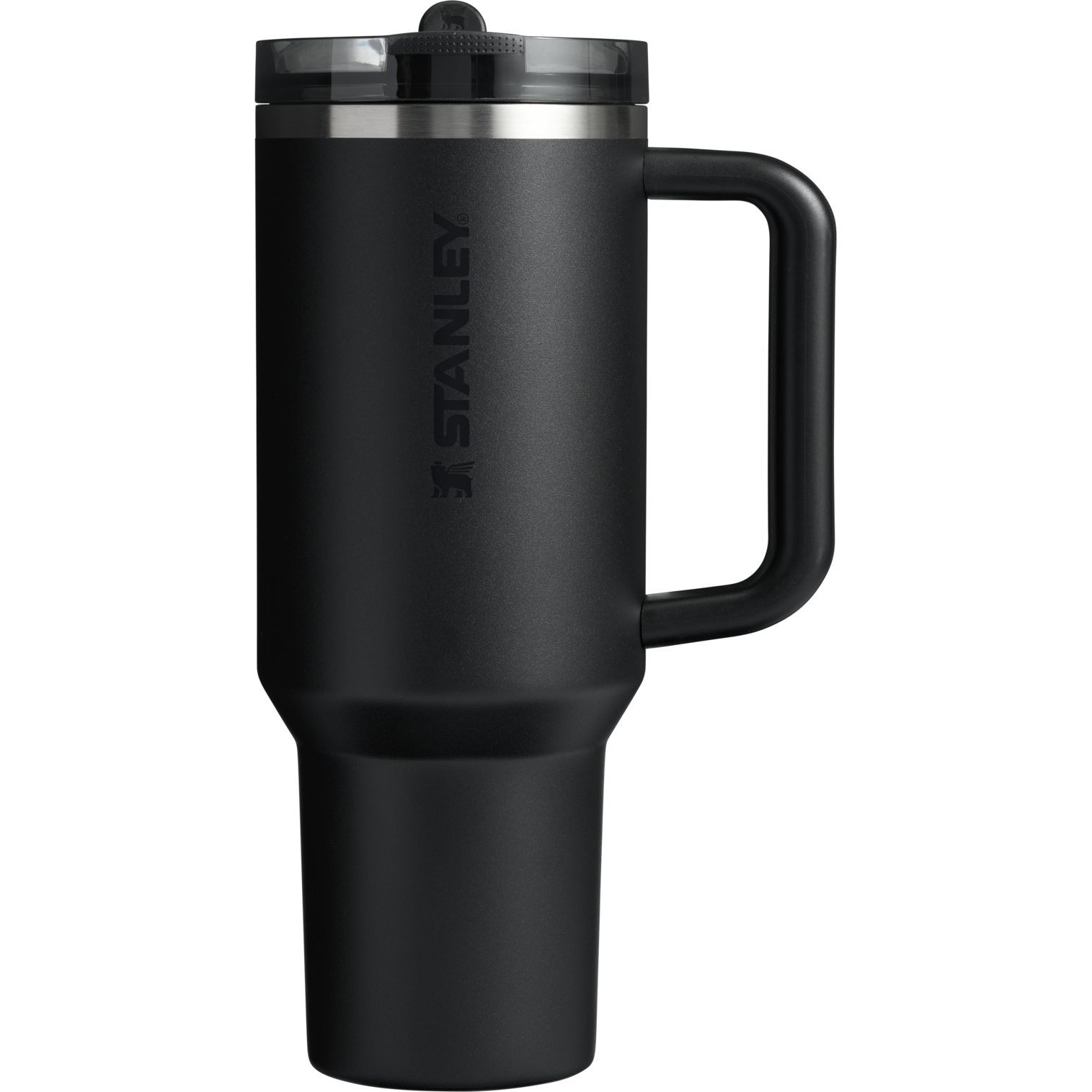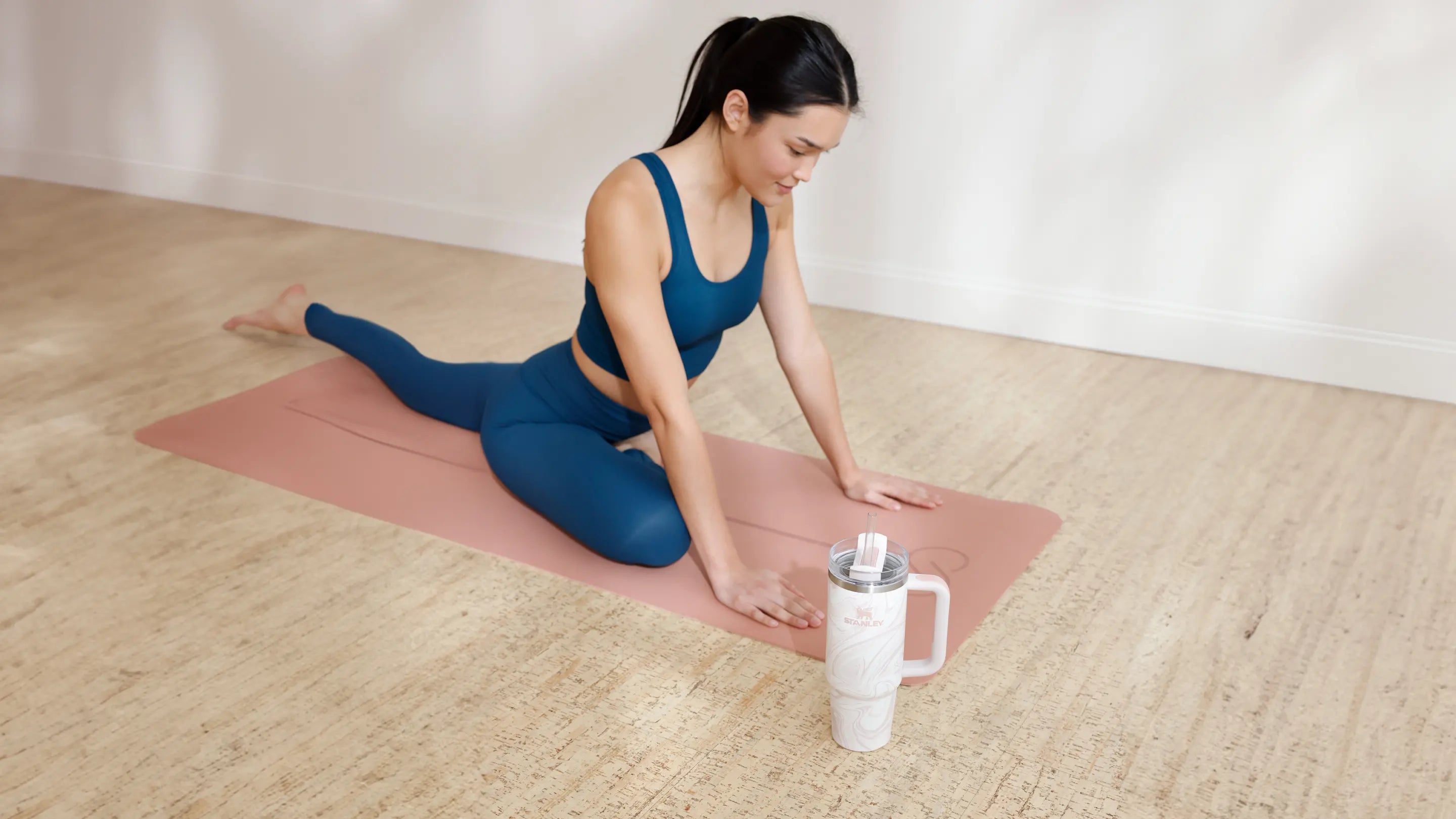Written By: Karla Tafra
Stretching before bed seems to be a popular habit people are implementing into their nighttime routines. When asked why they do it, they’ll tell you it makes them feel better, helps them relax, and in return, improves their flexibility over time. But, is there a scientific background to support those claims and are there benefits to bedtime stretches? Let’s find out.
PASSIVE VS ACTIVE STRETCHING
Before diving into the topic, it’s important to differentiate passive vs active stretching as they have different goals, involve different muscle fibers, and end up with different results.
Passive stretching consists of holding certain poses for long periods of time with little to no movement. It focuses on mindful breathing and aims to release any body tension in the body, relaxing your muscles, and activating the “rest and digest” mode of your nervous system, also known as the parasympathetic nervous system.
In this mode, your body prepares for sleep and repair, activates the release of the sleep hormone melatonin, and helps you transition into dreamland.
On the other hand, active stretching is a form of warm-up that consists of dynamic movements with the goal of increasing your blood flow, elevating your heart rate, lubricating your joints, warming up your muscles, and getting you ready for action. It still focuses on your breath, but you’re not holding positions for a long time and you’re rarely relaxing your muscles.
THE LINK BETWEEN STRETCHING AND RESTFUL SLEEP
Studies show that stretching before bed brings a variety of benefits to your health. From helping you become more in tune with your body and your breath which helps you step away from the stressors of your day, to reducing muscle soreness and potential cramps by relieving muscle tension and promoting lactic acid breakdown. That being said, here are five best gentle stretches to help improve your sleep quality.
5 BEST STRETCHES TO HELP IMPROVE SLEEP
Child’s Pose
Child’s pose is often used in a variety of yoga and fitness classes as a moment of calming down your nervous system. By performing it before bed, you’re helping your spine and neck stretch from your tailbone to the crown of your head, increasing space between the vertebrae and relaxing the surrounding muscles.
In child’s pose, your forehead is resting on the floor, so the weight of your head isn’t cramping up your neck and shoulders, allowing you to fully relax your upper body. Deep breaths throughout the simple stretch are encouraged as they help send signals into your brain that it’s time to rest.
Start in a kneeling position, separating your knees as wide as you comfortably can. Sit back on your heels and slowly move into a forward fold, stretching your arms in front of you while your torso comfortably sits in between your thighs. You might need to shimmy around a bit until you find the perfect position for your hips, but once you do, try to focus on relaxing every part of your back.
Check your neck and shoulders and with intention, bring your shoulders down, feeling more space for your neck muscles. You can gently massage your forehead by moving your head left and right and find an enhanced feeling of relief as you relax the space between your eyebrows and your jaw. Stay for five long inhales and exhales and take your time getting out of the pose.
Downward Facing Dog
Another popular yoga pose that’s known to calm your nervous system and activate its parasympathetic mode is downward facing dog. It’s important to note that this pose can also be invigorating and help you increase your energy, but the difference is in the passive form instead of the active.
The passive form of downward facing dog involves focusing on still rather than movement and deepening your breaths with every inhale and exhale.
Start in a plank position with your wrists right under your shoulders, feet high on their tippy toes, and hips in a neutral position. Take a big inhale, and on the exhale, without moving your hands or your feet, push your hips up and back, making an inverted V shape with your body.
Relax your head and let it naturally fall down, allowing gravity to stretch out your neck. Send shoulders away from your ears and feel your shoulder blades slide down your back. Bend your knees slightly to avoid pressure in your hamstrings and focus on reaching the floor with your heels. You don’[t have to actually place your heels on the floor, but the mere action of reaching down will stretch out your hips, hamstrings, calves, and even your lower back.
Keep pushing yourself away from the floor with your hands, trying to shift the weight more towards your legs so your upper body relaxes. Stay here for five long breath cycles and at the end of your last exhale, slowly walk your hands to your feet, taking your time to roll all the way up to a standing position.
Happy Baby
Yet another yoga pose (the pattern is visible here) that actively stimulates your nervous system and sends signals it’s time to relax is happy baby. Favorite to many, this calming pose uses the power of your own muscles to relax as a result. This makes it slightly different from other passive stretches, but just as effective.
Lie on your back and bend your knees, bringing them up to your chest. Grab your feet from the inside and flex your feet so you get a good grip and relax your head on the floor. Separate your knees as widely as you can, allowing them to naturally fall outside your torso.
At the same time, push with your feet into your hands and pull your feet down towards you, bringing the knees as close to the floor as possible. Deepen your breaths and try to sink deeper with each exhale. Relax your upper body as much as you can and breathe into your hips, feeling them open without any tension inch by inch. Stay for five long inhales and exhales.
At the end of your last exhale, gently release your feet and bring your knees together in for a hug. You can stay still or slowly move left and right, massaging your spine and the surrounding muscles as you do.
Lying Twist
Twists are incredibly beneficial at stimulating your body’s natural lymphatic system, flushing toxins out and bringing fresh oxygen into each cell, filling it up with nutrients. They are also helpful in relaxing the muscles of your lower back, releasing tension in your pelvic floor, and allowing energy to freely flow.
Start by lying on your back and relaxing your arms and legs on the floor. Inhale and bend your right knee, pulling it as close toward your chest as possible, keeping the left leg relaxed. Exhale, and use your left hand to pull the right knee across your body, twisting to the right. You can gaze up or turn your head to the right to intensify the stretch. With every inhale, try to extend your spine and with every exhale, try to get deeper into the twist.
Stay for three to five inhales and exhales, slowly exit the pose the backtracking what you did to get into the twist, and repeat everything on the other side.
Legs up The Wall
This restorative pose is well known for promoting better lymph flow, reducing water retention, and allowing your body to destress. All you really need is a wall or a flat and sturdy vertical surface with a comfortable base to lie on, and you’re good to go! Many people like doing this pose on the bed, with their legs on the adjacent wall or even the headboard.
Come into a lying position and bring your hips as close to the wall as possible, preferably touching it. Extend your legs straight up and hold the pose. Ideally, you would stay with your legs up for 3-5 minutes, feeling your lower back literally melt into the floor. However, for those who are trying this pose for the first time, it might be too intense and they should start with one to two minute holds.
When you’re ready to come out, let your legs fall to one side, turn on your side, and slowly bend your knees to pull them in.
FINAL THOUGHTS
Stretching before bed has some serious benefits so give it a go and be patient. After a few weeks of consistent action, there is a high probability you will notice a difference in your sleep quality.
ABOUT KARLA TAFRA
Karla Tafra, a Croatian content creator, yoga teacher, nutritionist, writer, and brand consultant, has been residing in the US for 7+ years. She has collaborated with various brands such as Nike, Gymshark, Adidas, Lululemon, Gaiam, Bodybuilding.com, Sakara Life, and W Hotels worldwide. Additionally, she served as the official off-season yoga teacher for the Seahawks and conducted health and wellness seminars in Facebook, Google, and Pinterest. Despite having a master's degree in law, her true passion lies in working with health and wellness brands that strive to enhance people's lives. She lives with her toddler in Bellevue, WA.
Back to HOW-TO GUIDES




